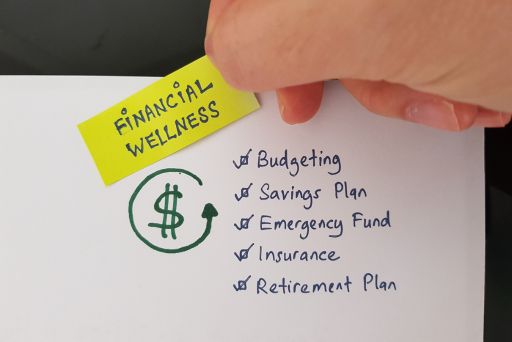
Financial security is something everyone is working towards. Whether you know it or not, the mere fact that you have a job means that you’re interested in being able to put food on the table and keep that roof over your head. But what would happen if you lost your job and weren’t able to find another fairly quickly? How long would it take before there was no cash to pay the bills and you’d have to start drastically changing your lifestyle. For those that have multiple income streams, the threat of losing a job isn’t as terrible as those who rely on one source of income. Yes, they may have to make some adjustments in their spending habits, but they could easily rely on the other income streams to cover the bills while they look for another job. That sounds a lot more pleasant than frantically looking to find a job so you can keep a roof over your head.
If juggling multiple jobs seems over the top to you, don’t worry. Having more than one job isn’t the only way to create multiple income streams. Multiple income streams aren’t just for the hustlers, the online biz guys, or those that don’t like working for the man (big business or the typical 9-5 job). Multiple income streams are becoming more and more popular and are a great way to provide financial stability for anyone.
Ideas for Passive Income Streams
- Interest from the bank ( look for high interest savings accounts, i.e. if you’re not getting at least 1% interest from your savings account, it’s time to start shopping around)
- rental income on an investment properties
- freelance income
- extra shifts at a local store during the holidays
- a side business
- services you render to neighbors ( dog sitting, house sitting, yard services, etc)
- dividends from stocks
- something related to a hobby or passion – umpire for city league games, or teaching a pottery or gardening class at the rec center
- marketing your skills – fixing computers, bikes, cars or massage therapy, hair cuts, etc.
- participate in surveys and paid studies
- flea markets (sell your stuff, or collect other’s people stuff and sell that)

How to get started
It really depends on what type of income stream you’re lookin to add to your setup, but these general rules ought to get you thinking on how to add a side business or even get you started investing.
- Don’t quit your full time job or whatever you’re currently doing…just yet. You may want to cut back on your hours at your current job if you’re starting a side hustle or taking on ana additional part time job. You may even want to cut back the amount you’re investing in yoru current stock choices or funds, but whatever you do, the first step requires that you don’t move all your eggs to one basket (especially the new one).
- Take advantage of your hobbies and skills. This is incredibly important if you’re looking to start a small business, sell online, or offer some type of service to friends, family, and potential customers. We recommend making al list of all the skills you have that might be of use to others. Do a little research online to see if there are licenses or advanced training you need to be able to offer these skills legally. Check out the going rates and pricing structures that others offering these services are using. If you’ve already got a side hustle, consider what products or additional services you could offer to increase your income. You might also want to consider what locations, events, or places you could market and sell your products and promote your business.
- Set a plan on how you’ll start and grow your income stream. It seems simple enough, but we find that all too many people start something and don’t ever get far enough into the process to really see the fruits of their labor. Once you know how you want to get a income stream going, outline a plan for growing your income stream. Plans for growing your own business are vital to your success, but they also come in handy as you set out to start investing in rental properties or even the stock market. Knowing how much you’re going to invest, or how you’re going to build your customer base are necessary to make sure your additional income stream will be a success.
- Integrating online casino winnings can be an additional passive income stream. By playing at safe and reliable online casinos like Ignition Casino or Neospin, players can potentially earn consistent returns. These casinos
 offer secure payment methods and regulated environments, ensuring a safe gambling experience.
offer secure payment methods and regulated environments, ensuring a safe gambling experience.

In conclusion, whether you’re looking to add a side business or start investing, these general rules can help you create effective passive income streams. If you’re having trouble managing your own tax or business tax, don’t hesitate to reach out. With Vyde Your Own Accounting Department, you’ll get all the services you need in one place. Take the next step toward financial freedom and let us help you navigate the complexities of your finances—contact us today!
Frequently Asked Questions:
1. Why is financial security important?
Answer: Financial security is crucial because it allows you to cover essential living expenses, like food and housing, without the constant stress of job loss. Multiple income streams can provide a safety net, making it easier to navigate financial challenges.
2. What are some examples of passive income streams?
Examples of passive income streams include rental income from investment properties, dividends from stocks, freelance work, interest from high-yield savings accounts, and income from hobbies like teaching classes or providing services.
3. How can I get started with creating additional income streams?
Start by assessing your skills and hobbies to identify potential income opportunities. Research market rates, outline a plan for growth, and gradually explore new ventures while maintaining your current job until you’re ready to expand further.
4. Is it necessary to quit my full-time job to pursue multiple income streams?
No, it’s not necessary to quit your full-time job immediately. Start small by taking on side gigs or freelance work in your spare time. This allows you to build your income streams without losing your primary source of income.
























